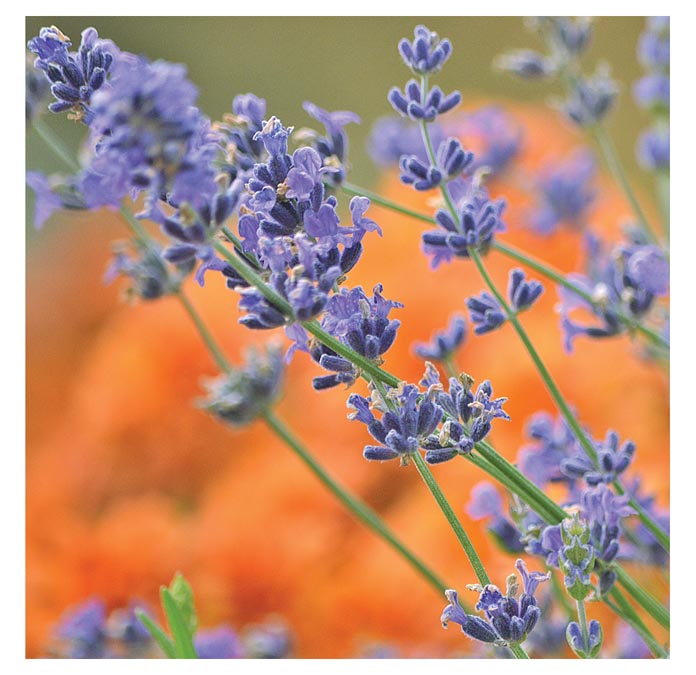

“Lavender’s Blue, dilly, dilly, Lavender’s green, When you are king, dilly, dilly, I shall be queen.” — An English lullaby
January is the month when the heart begins to think of gardens, and swimming, and outdoor pleasures. We are weary of Winter and look forward to Springtime. Thoughts turn to seeds and mulch and the birds returning to the birdfeeder. Let us think about the history of lavender and all will be well.

Lavender, an herb, was mentioned in history more than 2,500 years ago and was used by the Egyptians, Phoenicians, and the people of Arabia. Romans used lavender for bathing, cooking, and scenting the air. Lavender is mentioned often in the Bible by the name used at that time of spikenard.
Lavender, from the Latin “Lavare,” means “to wash.” The Egyptians used it in their mummification process and decorative urns were found in the pyramids with residues still inside. There are 30 species in the genus Lavandula.
The plant is believed to have been taken from the Garden of Eden by Adam and Eve. In many Christian homes a cross of lavender was hung over the door for protection. In Medieval and Renaissance Europe, the washing women were known as “lavenders” and they used the herb to scent drawers and dried the laundry on lavender bushes. Monasteries grew lavender and many other medicinal herbs. Mary used it on the infant Jesus and anointed Jesus with lavender after the crucifixion when she was preparing him for burial.
During the Great Plague in London in the 17th Century, a bunch of lavender tied to each wrist would protect the wearer against the deadly disease. Furthermore, grave-robbers were known to wash in Four Thieves Vinegar which contained lavender, after doing their dirty work and they rarely contracted the disease. In 16th Century France, lavender was used to resist infection. Glove-makers, who were licensed to apply perfume to their wares with lavender, escaped cholera at that time.
European royal history is replete with stories of lavender. Charles VI of France demanded lavender-filled pillows wherever he went. Queen Elizabeth I of England required lavender conserve at her royal table. She wanted fresh lavender flowers available every day of the year. That was a daunting task for a gardener if you consider England’s climate. I imagine their January cold was similar to ours.
Queen Victoria appointed an official lavender purveyor. Her name was Miss Sarah Sprules and her title was “Purveyor to the Queen.” Floors and furniture were washed and all the linens were perfumed with its sweet scent. She requested that a supply of fresh flower bundles be brought to her daily. Lavender flowers were strewn throughout the stone castle floors and then released their scent with foot traffic.
Street vendors sold lavender bunches that they had harvested from the hills. The women would craft flower Tussie Mussies which were small gatherings of the flower. The scent of lavender symbolized cleanliness and purity.
Today aromatherapy and the use of lavender’s sweet essential oils are helpful for quick healing and their antibacterial properties make lavender so useful. Nature offers its cures and we are wise to listen. Put lavender in your drawers, linen closet, and use it in your baking. It has the most clean, appealing, scent of all.

